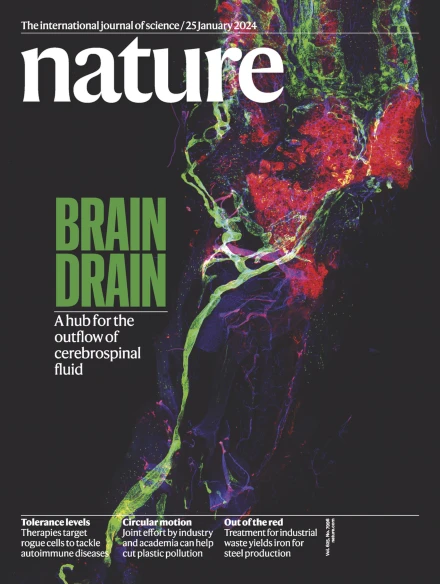空气污染调节了全球甲烷收支的趋势和变异性
IF 50.5
1区 综合性期刊
Q1 MULTIDISCIPLINARY SCIENCES
引用次数: 0
摘要
空气污染通过各种复杂的相互作用影响气候。它扰乱了地球的辐射能量平衡,改变了大气的氧化能力,而氧化能力决定了甲烷等短命气候因子的寿命。这种动态的一个关键机制是空气污染物对羟基自由基(OH)的影响,羟基自由基是对流层中最重要的氧化剂,约占甲烷化学汇的90%。然而,对空气污染物、OH和甲烷在年代际时间尺度上的相互作用的全面量化仍然不完整。在这里,我们开发了一种综合的观测驱动和模型驱动的方法来量化关键空气污染物的变化如何影响甲烷化学汇和改变甲烷收支。我们的研究结果表明,从2005年到2021年,对流层臭氧的增强、水蒸气的增加和一氧化碳水平的降低共同导致全球甲烷汇每年增加1.3-2.0 Tg,从而缓冲了大气甲烷的增长率。甲烷汇的增加主要集中在热带地区,并呈现南北不对称。甲烷的高增长率通常与空气污染物波动导致的OH水平突然下降有关,特别是在大型野火和COVID-19大流行等极端事件期间。我们的研究表明,在臭氧污染控制和OH介导的甲烷去除之间存在权衡,并强调了广泛野火增加一氧化碳排放的风险。本文章由计算机程序翻译,如有差异,请以英文原文为准。


Air pollution modulates trends and variability of the global methane budget
Air pollution affects climate through various complex interactions1. It perturbs the Earth’s radiative energy balance and alters the atmospheric oxidation capacity, which determines the lifetimes of short-lived climate forcers, such as methane1. A key mechanism in this dynamic is the impact of air pollutants on the hydroxyl radical (OH), the most important oxidant in the troposphere, which accounts for approximately 90% of the methane chemical sink2. However, a comprehensive quantification of the interactions between air pollutants, OH and methane over decadal timescales remains incomplete2. Here we develop an integrated observation-driven and model-driven approach to quantify how variations in key air pollutants influence the methane chemical sink and alter the methane budget. Our results indicate that, from 2005 to 2021, enhanced tropospheric ozone, increased water vapour and decreased carbon monoxide levels collectively contributed to a 1.3–2.0 Tg year−1 increase per year in the global methane sink, thereby buffering atmospheric methane growth rates. This increase in the methane sink was primarily concentrated in tropical regions and exhibited a north–south asymmetry. Periods of high methane growth were typically linked to abrupt OH level declines driven by fluctuations in air pollutants, especially during extreme events such as mega wildfires and the COVID-19 pandemic. Our study suggests a trade-off between O3 pollution control and methane removal mediated by OH and highlights the risk of increasing carbon monoxide emissions from widespread wildfires. An integrated observation-driven and model-driven approach demonstrates that, from 2005 to 2021, periods of high atmospheric methane growth were linked to trends and variations in OH levels driven by fluctuations in air pollutants, especially during extreme events.
求助全文
通过发布文献求助,成功后即可免费获取论文全文。
去求助
来源期刊

Nature
综合性期刊-综合性期刊
CiteScore
90.00
自引率
1.20%
发文量
3652
审稿时长
3 months
期刊介绍:
Nature is a prestigious international journal that publishes peer-reviewed research in various scientific and technological fields. The selection of articles is based on criteria such as originality, importance, interdisciplinary relevance, timeliness, accessibility, elegance, and surprising conclusions. In addition to showcasing significant scientific advances, Nature delivers rapid, authoritative, insightful news, and interpretation of current and upcoming trends impacting science, scientists, and the broader public. The journal serves a dual purpose: firstly, to promptly share noteworthy scientific advances and foster discussions among scientists, and secondly, to ensure the swift dissemination of scientific results globally, emphasizing their significance for knowledge, culture, and daily life.
 求助内容:
求助内容: 应助结果提醒方式:
应助结果提醒方式:


